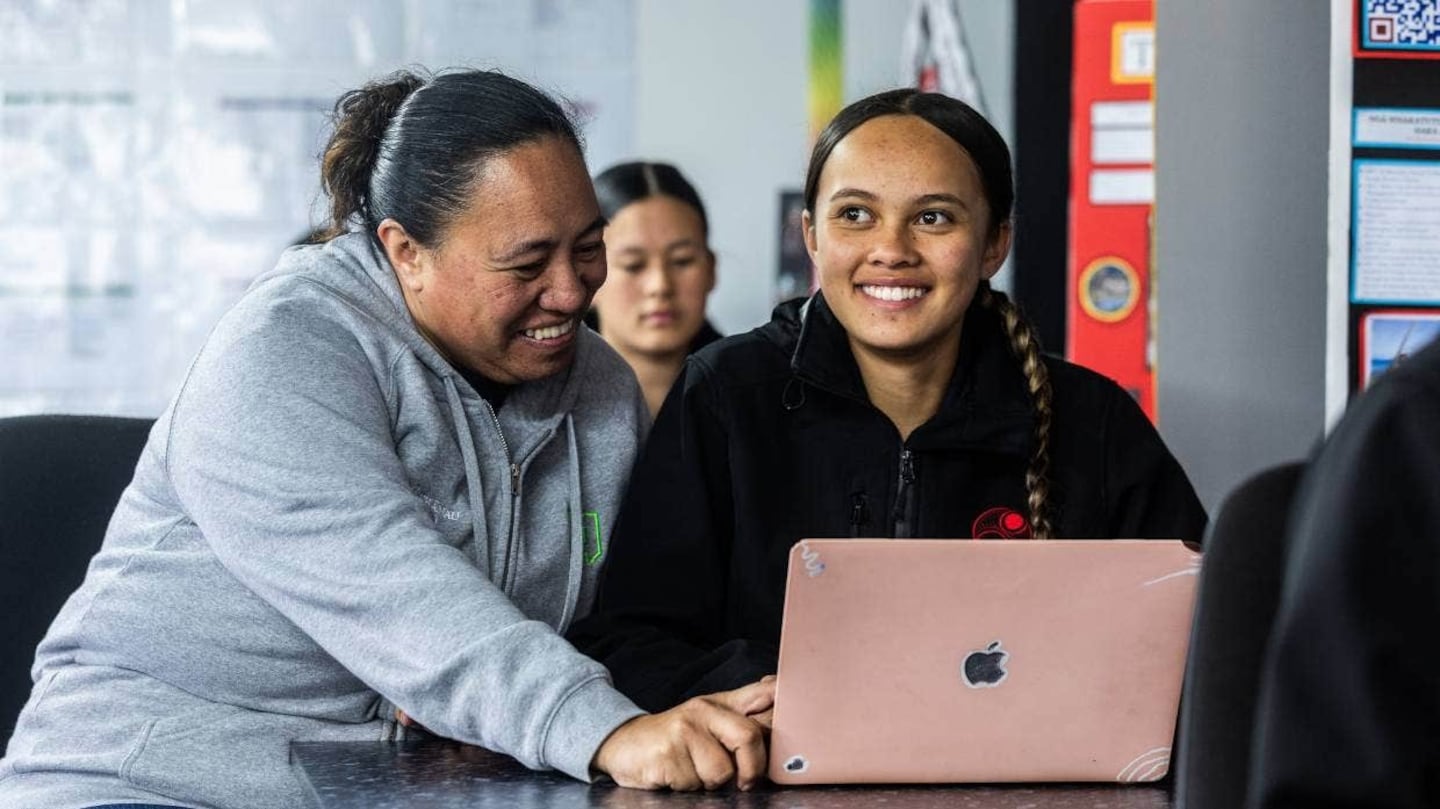A new Māori immersion secondary school is flourishing, with dreams of growth for the future.
Te Wharekura o Manawatū opened this year as an expansion of the existing Māori immersion primary school Te Kura Kaupapa Māori o Manawatū in Kelvin Grove in Palmerston North.
Te Kura Kaupapa Maori o Manawatū opened in 1990 and was the first Māori immersion school in the country outside Auckland.
The school’s tiamana (chairperson) Chris Whaiapu said it had been a long-held aspiration to make the leap to a secondary school and it finally came to fruition at the start of this year with five year 9 students in the first intake. A storage shed was refurbished into the high school’s classroom.
The school’s entire roll is about 105.
Those five students will progress through the year groups, with new students coming in underneath them. They are well supported by whānau and there has been a lot of interest in parents whose children had been to Te Kura Kaupapa Māori o Manawatū and gone to other high schools.
Tumuaki (principal) Roberta Kaiwai-Paterangi said the projections were for eight students coming in at year 9 next year and another six the following year.
They wanted to maintain the quality and richness as they grew, she said.
Whaiapu said they aimed to have about 50 students in five years’ time when every year level was covered.
When it started the school had a growth plan for more buildings and infrastructure.
It has only done a fraction of that now, so there were ambitions for future developments and they would like to have a kōhanga reo early childhood centre and a gym-hall facility one day.
The school operates under Te Aho Matua, the approach to teaching in all kura, which Kaiwai-Paterangi said encompassed the world the tamariki (children) lived in and the opportunities they were provided.
Whaiapu said education through a Māori lens could often lead to better outcomes for Māori than if they had been through mainstream education, as Māori were over-represented in many negative statistics in New Zealand.
Teacher Hana Netana, who is also a parent of one of the students, said previously children had to leave the kaupapa (theme or topic) once they finished primary school at Te Kura Kaupapa Māori o Manawatū and go into the mainstream education system, but now they could continue the journey at Te Wharekura o Manawatū.
Kaiwai-Paterangi said they could continue to nurture the children in their system.
It was a big occasion at the start of the year when the school opened with an official opening ceremony and dawn blessing.
Previously when year 8 children finished school there was a graduation ceremony, but with the expansion, they organised something for the children who were progressing to the new secondary school, a whakawhiti (crossing over) ceremony.
Whaiapu said the first students recognised the significance of going into the new school and knew what they were embracing.
When Stuff visited this week, the school had gathered to hear year 9 student Keepa Whaiapu perform his speech from the Manawatū Horowhenua Ngā Manu Kōrero speech competition in June.
He won the junior Māori category and qualified to go to the national final in Dunedin later this month. His speech was about why he chose to attend Te Wharekura o Manawatū.
Student Tia Netana-Williams, 14, has been at the school since she was 5 and had always wanted to stay for all of her schooling, so she could continue working under the Te Aho Matua philosophy.
She said she had remained committed to the exciting kaupapa and had been supported by teachers and whānau.
Students and whānau had been involved in getting the new classroom prepared at the start of the year.



